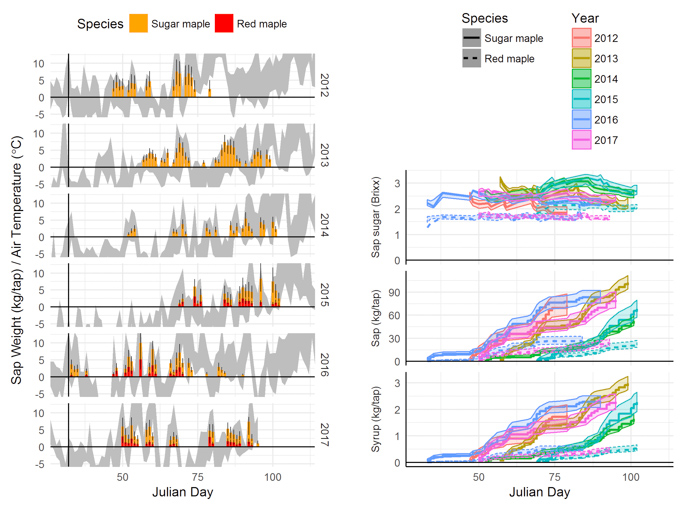Ask a sugar maker if they think it will be a good season in February or March and they are likely to say, “Ask me in May.” There’s a good reason for that, and this year’s season is exhibit A.
A warm winter spurred some producers in the northeast to tap in January and 70 degree temperatures in February made some worry that the season would be short, and that there would be a “maple syrup shortage”.
But then early March felt like a normal February, pushing the pause button on sap flow. When it started again in late-March the sap was clear and reasonably sweet, and the syrup coming out of the Harvard Forest sugar shack the last week in March was lighter than that made a month earlier.
Now the first week in April, the sap has stopped flowing again, this time because temperatures are staying above freezing and microbial growth has clogged the taps. The season is over.
So, after a season that can rightfully be called “weird”, the final numbers on the season are…. average.
Sugar maple sap stats compared to the full 6 years of data (Red maple sap is much lower for all measures).
Mean sap sugar content of 2.5 is average (mean = 2.5, median = 2.5).
Total sap collected of 80 kg per tap is slightly above average (mean = 77, median = 76).
Total (potential) syrup produced of 2.3 kg (~0.46 gallons) per tap is average (mean = 2.2, median = 2.3).
The total number of sap collection days of 22 is average (mean = 22, median = 22).
So there you go, it was an average year for maple sap at Harvard Forest.
